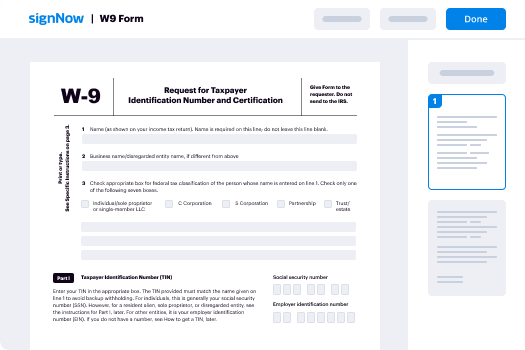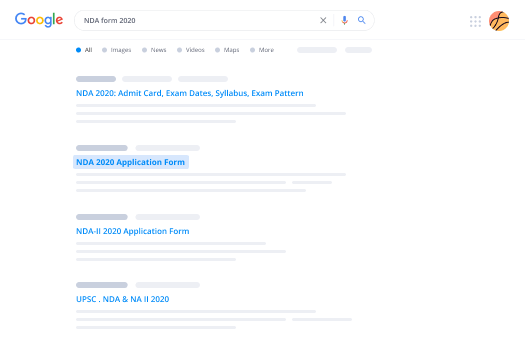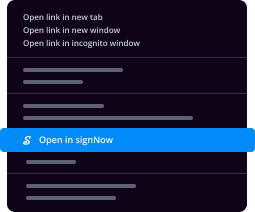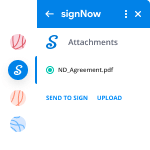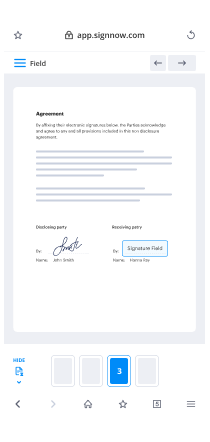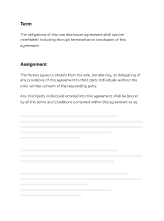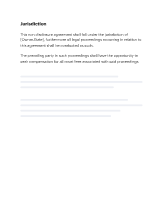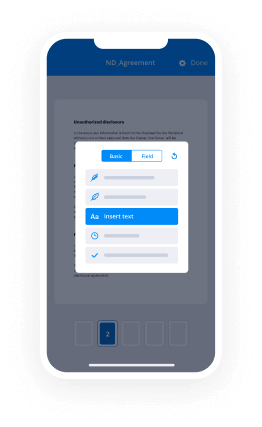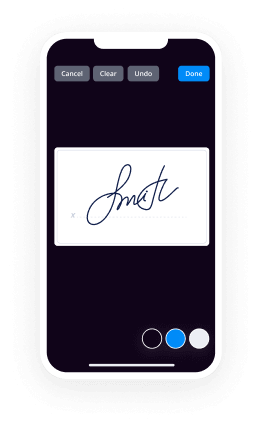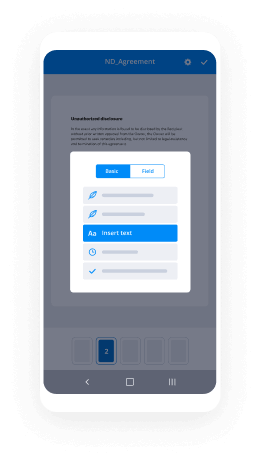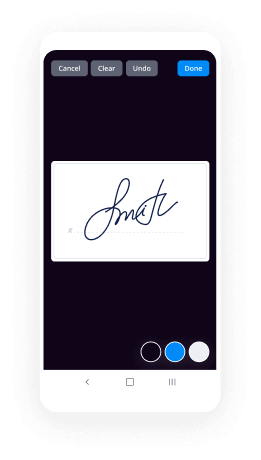Manual of Transcript Procedures
March 2016 ALASKA COURT SYSTEM
MANUAL OF
TRANSCRIPT PROCEDURES
March 2016
Appellate Court
303 K Street, 4 Floor th
Anchorage, AK 99501
TF-410 (3/16)(cherry cvr)
Manual of Transcript Procedures
March 2016 INTRODUCTION
This Manual of Transcript Procedures (TF-410) consists of two parts. Part I applies to all transcripts filed
with the Alaska Court System . All transcripts filed with the Alaska Court System must be prepared
in the form set out in this m anual.
Part II applies to transcripts prepared for the Alaska Court System by transcribers em ployed by the court
system or under contract with the court system .
T ranscribers under contract with the Alask a C ourt S ystem m ust subm it a com pleted T ranscriber Audio
Evaluation form for each assignment in which there were any issues with the recordings that hindered
transcription; however, all transcribers are encouraged to subm it the applicable form (Appendix X) that can be found here: http://courts.alaska.gov/form s/ap-810.pdf
The Alaska Court System reserves the right to duplicate any transcript filed with the court without paym ent
of fees to the transcriber.
Manual of Transcript Procedures
March 2016 TABLE OF CONTENTS
PART I
CHAPTER
PAGE
I SPECIFICATIONS A. PAPER 2
1. Size 2
2. W eight 2
3. Color 2
B. INK COLOR 2
C. PREPRINTED MARGINAL LINES 2
D. LINE NUMBERING 2
E. PAGE NUMBERING 2
1. Volum e page 2
2. Table of contents 2
3. Day pages 2
4. Proceedings page 2
5. Certificate 2
F. TYPING 1. Letter quality 3
2. Type size 3
3. Num ber of lines per page 3
4. Margins 3
5. Spacing 3
6. Hyphenation/word division 3
7. Paragraphing 3
8. Indentations 3
a. Q & A 3
b. Colloquy 3
9. Legibility 3
G. FORM Condensed Form 4
a. Software 4
b. Full pages/m axim um number of pages in a volum e 4
c. Electronic version 4
d. Duplexing (double sided copies) 5
e. Binding 5
H. COPIES 5
1. ELECTRONIC COPIES 5
2. HARD COPIES 5
I. MEDIA LABELING 5
II FORM AT A. VOLUMES 6
B. VOLUME TITLE PAGE 6
C. TABLE OF CONTENTS 6
D. DAY PAGE 7
E. COMBINATION VOLUME TITLE/DAY PAGE 8
Manual of Transcript Procedures
March 2016 TABLE OF CONTENTS, CONTINUED
PAGE
F. CONTENT 8
1. Verbal 8
a. Striking Portions of the Proceedings 8
b. Editing of Speech 8
c. Reporting of Audio/Video Recordings 8
d. Private Com m unications and Off the Record Conversations 9
e. Laughter 9
f. Jury Instructions 9
2. Sum m ary Phrases 9
3. Identification of Speakers 9
4. Exam ination of W itnesses 10
a. W itness Identification 10
b. Types of Exam ination 11
(1) Direct Exam ination 11
(2) Cross Exam ination 11
(3) Redirect Exam ination 11
(4) Recross Exam ination 11
(5) Continued Exam ination 11
(6) Offer of Proof 12
(7) Voir Dire Examination 13
5. Breaks in Speech 14
a. Dashes 14
(1) Changes of Thought 14
(2) Repetition 14
(3) Mid-W ord 14
(4) Interruptions 14
(5) Fade Out 14
(6) Change of Addressee 14
b. Editing 15
6. Indistinct Portions 15
a. Indiscernible 15
b. Inaudible Reply 15
7. Pauses 15
8. Exhibits 16
9. W ord Usage 16
a. Phonetic 16
b. Sic 16
c. Incorrect Term 16
d. Colloquialism s 16
Manual of Transcript Procedures
March 2016 TABLE OF CONTENTS, CONTINUED
PAGE
10. Gram m ar and Punctuation 17
a. Capitalization 17
b. Num bers 17
c. Quotation Marks 18
11. Interpreters 18
a. Literal Translation 18
b. Non-literal Translation 18
12. Miscellaneous 19
a. Requested Portions 19
b. Previously Transcribed Portions 19
c. Interrupted Proceedings 19
d. Off Record 19
e. Change of Media During Trial or Hearing 20
f. Depositions or Other Documents Read Into the Record 20
g. End of Transcript 20
h. Testim ony/Event Reference 21
I. Oath to Jury 21
j. Polling of Jury 21
k. Case Citations 21
III GRAND JURY PROCEEDINGS 22
IV SEARCH W ARRANTS 24
V CERTIFICATION 25
PART II
VI CLASSIFICATION OF TRANSCRIPT ERRORS 27
A. FORMAT 27
B. VERBATIM ERRORS 27
1. Minor 27
2. Major 29
C. PUNCTUATION 30
D. SPELLING 30
E. INDISCERNIBLE 31
1. Bench Conferences 31
2. Speech Away from a Microphone and Telephonic Speech 31
F. TRANSCRIBER AUDIO EVALUATION 31
VII APPENDIX 32
Manual of Transcript Procedures
March 2016 PART I
Part I of this manual applies to all transcripts filed with the Alaska Court System .
Manual of Transcript Procedures
March 2016
2CHAPTER I
SPECIFICATIONS
A. PAPER 1. Size: Paper size shall be 8-1/2 x 11 inches.
2. W eight: The weight of paper shall be at least 20 pounds for both originals and copies.
3. Color: Good quality white paper is required.
B. INK COLOR Black ink shall be used for both originals and copies.
C. PREPRINTED M ARGINAL LINES Solid left and right marginal lines on all pages are required. The marginal lines are to be placed on the page so that
text begins 1.62 inches from the left side of the page and ends .5 inches from
the right side of the page. The use of top and bottom m arginal lines are optional.
D. LINE NUMBERING Each page of a transcript shall contain 25 numbered lines.
E. PAGE NUMBERING The pages of a transcript shall be numbered in a single series of consecutive num bers regardless
of the num ber of days or number of proceedings involved. The page number shall be placed at
the bottom right corner. The page number does not count as a line. The transcript, whether
consisting of one or more volum es, shall be numbered in a single chronological sequence
throughout all volum es.
1. Volum e pages are counted but not physically numbered.
2. Tables of Contents pages are numbered consecutively to the volum e page, 2, 3, 4, etc.
3. Day pages are num bered in sequence. Use the page number on the day page (Appendix E) for the table of contents and the volum e pages (Appendix B).
4. Each page after the day page is num bered with consecutive num bers.
5. The certificate is always the last page of every transcript and is num bered. If there are m ultiple volum es, it would be the last page of the last volum e. The certificate page
number is not shown on the volume page . Exam ple of page num bering: Single volume
M ultiple volumes
Volum e I is Page 1 Volum e II is Page 785
Table of Contents is Page 2 Day Page is Page 786
Day Page is Page 3 Proceedings Page is Page 787
Proceedings Page is Page 4 Certificate is last numbered page
Certificate is last numbered page
Manual of Transcript Procedures
March 2016
3
F. TYPING THE FOLLOWING CRITERIA APPLY TO TRANSCRIPTION PARAMETERS PRIOR TO CONDENSING
1.
Letter Quality: The type shall be letter quality. Use of script or dot matrix is not
acceptable. 2.
Type Size: The letter character size shall be 10 characters to the inch. This provides for
approxim ately 63 characters to each line. 3.
Number of Lines Per Page: Each page of transcription shall contain 25 lines of text,
except the last page, which may contain fewer lines of text, but must have 25 numbered
lines in any event. Page numbers or notations are not to be considered part of the 25
lines of text. 4.
M argins: Text is to begin on each page at the 1.62 inch left margin and continue to the
.5 inch right margin. This provides for 6.38 inches of text per line inside the left and right
m arginal lines. 5.
Spacing: Lines of transcript text shall be double spaced. 6.
Hyphenation/W ord Division: Com m only accepted rules for proper hyphenation are to
be followed. Hyphens are to be used when words or nam es are spelled out. W ords are
not to be hyphenated at the end of a line and hyphens are not to be separated at the end
of a line. 7.
Paragraphing: The purpose of paragraphing is to make reading easier, clearer, and sm oother. One sentence paragraphs are undesirable and shall be avoided when
possible, as well as paragraphs com prised of one or m ore pages of transcript.
Paragraphing m ust rem ain consistent throughout the transcript.
There shall be a new
paragraph for each new speaker. 8.
Indentations:
a.Q and A. All Q and A designations shall begin at the left margin. The statem ent
following the Q and A begins on the sixth space from the left margin. Subsequent
lines begin on the sixth space from the left margin.
b.Colloquy. Speak er identification begins on the sixth space from the left m argin
followed directly by a colon. The statem ent begins on the third space after the
colon. Subsequent lines begin at the left m argin. 9.
Legibility: The original transcript and each copy is to be legible without any interlineation
m aterially defacing the transcript.
Manual of Transcript Procedures
March 2016
4
G. FORM
The court system uses a condensed form for transcripts. A party who is responsible for
preparation of a transcript is required to use the condensed form described below. W e will not
accept a transcript volum e com prised of m ore than 240 sheets of paper (960 condensed pages).
Remember: Do not split a day’s proceedings between two volumes. 1.
Condensed Form The following specifications apply to condensed form transcripts:
a. Condensing software m ust first be approved by ACS with respect to its legibility and m ust produce a page layout arranged as follows:
b. The following pages m ust be full-size: volum e title page, table of contents, and certificate. These pages are to be counted in the 240 page total of condensed
transcripts.
c. If an electronic version of the transcript is required, the electronic version must be in the original, non-condensed form . This will allow anyone who has difficulty
reading the condensed form to print a full-size version of the transcript.
Manual of Transcript Procedures
March 2016
5The following section is applicable to transcripts prepared by private transcribers (not on contract
with the Alaska Court System)
:
d. Condensed pages m ust be duplexed, that is, copied on both sides of the paper. Non-condensed pages (the volum e title page, table of contents, and certificate)
m ust be single-sided and are counted in the total 120 pages of condensed,
duplexed transcript.
e. T ape binding is preferred for condensed transcripts; however, if the transcript is tape-bound, the front and back covers must be yellow cover stock (at least 65 lb.
weight) and each volum e m ust be lim ited to 120 sheets of paper, including
front and back covers. Covers may be heavyweight transparent plastic, yellow
cover stock (at least 65 lb. weight) or another material approved in advance by the
Alaska Court System . Multiple volum es should be approxim ately equal in size.
Each volum e must be separately secured on the left side with a perm anent
fastener or binding, such as an ACCO fastener, staples, a report cover, or a spiral
binding, comb (GBC) binding, or tape binding. Other fasteners or bindings must
be approved in advance by the Alaska Court System .
It is preferable to have one large volum e consisting of several days' proceedings,
rather than several sm all volum es each consisting of only one day. D o not split
one day's proceedings between two volum es.
H. COPIES Pursuant to Appellate Rule 210(b)(5), in cases on appeal to the Alaska Suprem e Court or the Court
of Appeals, a transcriber must file with the court one hard copy of the transcript in condensed
form at and an electronic version.
1. HARD COPIES
Condensed transcript copies are to be reproduced by any method of reproduction that produces
black text on white paper. There shall be no markings on the original or copies that would hinder
clear reproduction by m echanical m eans by any court official or party.
2. ELECTRONIC COPIES
Electronic copies must be submitted on a CD-R disc. A transcript shall be form atted in:
W ordPerfect for W indows or M icrosoft W ord. T he electronic version of a transcript m ay not be in
condensed form at.
I. MEDIA LABELING The CD-R disc must be labeled as follows:
Use CD labeler or permanent marker to label CD
Manual of Transcript Procedures
March 2016
6
CHAPTER II FORM AT
A transcript m ay include m ore than one proceeding in a case held on separate days. For exam ple, if
instructed to transcribe several separate proceedings in one case, such as the arraignm ent, evidentiary
hearing, the trial, and sentencing, each held on separate days, the four proceedings would be one
transcript volum e, provided that the com bined days do not exceed 240 single sheets of paper. (Section G)
A. VOLUMES More than one day of proceedings may be contained in a volum e. Follow guidelines for number
of pages in a volum e. Do not split a day’s proceeding between two volum es. Each volum e must
contain:
1. Volum e title page (Appendix B).
2. Day page (Appendix E).
3. Transcribed proceedings (Appendix G).
4. First volum e must contain a table of contents (if required) for all volum es (Appendix
C and D).
5. Last volum e m ust contain a certificate (Appendix H).
B. VOLUME TITLE PAGE The volum e title page (Appendix B) is an introductory page showing the following inform ation:
1. Court name
2. District
3. Case caption
4. Case num ber
5. Volum e number 6. The line TRANSCRIPT OF PROCEEDINGS centered in caps and underlined.
7. Dates of proceedings contained in the volum e and the page num bers for each date
beginning with each day page num ber and ending with the last page num ber of each day.
In som e instances, the volum e title page and the day page m ay be com bined (Section E).
8. Alaska Court System Disclaim er
C. TABLE OF CONTENTS The table of contents is a list of im portant events in a transcript and lists the page number in the
transcript on which they appear (Appendix C and D). If a witness testifies on redirect, recross and
redirect again, the first page num ber is shown, a slash bar, then the second page number
(Appendix C). A transcript must include a table of contents whenever a transcript contains any of
the following:
1. Any witnesses;
2. Any exhibits admitted; or
3. More than one day of proceedings of a different nature
Multi-volum e transcripts contain only one table of contents for the entire transcript and it follows
the first volum e page im m ediately preceding the first day page. The table of contents m ust
indicate:(a) Each proceeding in a transcript (for example, arraignment, bail hearing, trial byjury, sentencing, etc.). The title of the proceedings for the table of contents must
Manual of Transcript Procedures
March 2016
7
read the sam e as it appears on the day page. Only the first day of trial should be
listed if multiple days. See Appendix C for example.
(b) Exam ples of im portant events in each proceeding are: (1) Jury selection
(2) O pening statem ents
(3) W itnesses
(4) Exhibits
(5) Closing argum ents
(6) Verdict
(c) The nam es of witnesses, on whose behalf the witnesses were called, the type of examination (direct, cross, redirect, recross, rebuttal, surrebuttal), and the
pagenum ber where the witness's nam e appears
. A witness’s name is to be typed
on the table of contents exactly as it appears in the transcript; i.e., m iddle
initial/no middle initial, full name, Jr., etc. Rebuttal and surrebuttal witness
set-ups are also listed on the table of contents (Appendix C). 9RLU�GLUH�H[DP LQDWLRQ�LV�QRW�VKRZQ�RQ�WKH�WDEOH�RI�FRQWHQWV��,I�D�ZLWQHVV
V
WHVWLP RQ\�LV�LQWHUUXSWHG�E\�YRLU�GLUH�DQG�WKH�RULJLQDO�H[DPLQDWLRQ�LV�FRQWLQXHG�
WKHUH�LV�QR�QHHG�WR�VKRZ�WKH�LQWHUUXSWLRQ�RQ�WKH�WDEOH�RI�FRQWHQWV���,I�D�ZLWQHVV�LV
LQWHUUXSWHG�E\�DQRWKHU�ZLWQHVV�DQG�WKH�RULJLQDO�H[DPLQDWLRQ�LV�WKHQ�UHVXPHG�
VKRZ�WKH�ILUVW�SDJH�QXP EHU��IROORZHG�E\�D�VODVK�EDU��WKHQ�VKRZ�WKH�VHFRQG�SDJH
QXP EHU�RQ�WKH�WDEOH�RI�FRQWHQWV�ZKHUH�WKH�H[DP LQDWLRQ�LV�FRQWLQXHG��$SSHQGL[
&��
�G� $�OLVW�RI�H[KLELWV�DGP LWWHG�LQWR�HYLGHQFH���7KH�OLVW�LV�WR�LQGLFDWH�WKH�H[KLELW�QXP EHU� D�EULHI�GHVFULSWLRQ�RI�WKH�H[KLELW��DQG�WKH�SDJH�QXPEHU�ZKHUH�WKH�H[KLELW�ZDV
DGPLWWHG���([KLELWV�LGHQWLILHG�EXW�QRW�DGPLWWHG�DUH�QRW�VKRZQ�RQ�WKH�WDEOH�RI
FRQWHQWV�RU�LQ�WKH�WUDQVFULSW���,I�H[KLELWV���WKURXJK����DUH�DOO�SKRWRJUDSKV�DQG�DUH
DGPLWWHG�RQ�WKH�VDP H�SDJH��FRPELQH�WKH�H[KLELWV���WKURXJK����RQ�WKH�WDEOH�RI
FRQWHQWV�DQG�VKRZ�RQH�EULHI�GHVFULSWLRQ�DQG�RQO\�RQH�SDJH�QXP EHU��$SSHQGL[�&���
�H� 7KH�SDJH�QXPEHU�IRU�WKH�WDEOH�RI�FRQWHQWV�VKRZLQJ�WKH�YHUGLFW�LV�WKH�SDJH� QXPEHU�ZKHUH�WKH�FRXUW�FRPHV�EDFN�RQ�UHFRUG�DIWHU�GHOLEHUDWLRQV�DQG�UHFHLYHV�
WKH�YHUGLFW�IURP �WKH�IRUHSHUVRQ�
D. DAY PAGE Inform ation for the day page (Appendix E) is obtained from the in-court clerk’s log notes or tags
(Appendix Z and AA ). Each day of proceedings must begin with a day page indicating:
1. Nature of proceeding
2. Nam e and title of judge or other official presiding
3. Location of proceeding, date and beginning tim e
4. Appearances for the parties (name and address of each attorney and for whom they appear). W hen typing the day page, do not use abbreviations ; for exam ple, W est Fourth
Avenue, not W . 4th Ave or Anchorage, Alaska, not Anchorage, AK. A private person who
acts as his own attorney is designated as In Propria Persona. This term is listed in place
of Attorney at Law or Assistant Public Defender, etc. (Appendix A). If no parties are
present, indicate none on the day page (Appendix F).
5. Also Present. For exam ple, Departm ent of Corrections, Social W orkers, etc. Use the in-court clerk’s log notes to indicate the nam es of persons present. If someone other
than a witness or a party speaks for the record, they shall be identified on the day page
(Appendix P) from inform ation contained in the log notes. If an attorney appears on
behalf of a witness testifying in a trial, the attorney's name is shown as also present for ZLWQHVV�;��$SSHQGL[�(��
��� 1RWDWLRQ�RI��WHOHSKRQLFDOO\��IRU�DQ\�SDUW\�RU�WKH�FRXUW�DSSHDULQJ�DV�VXFK�
7\SH�RI�3URFHHGLQJ���,I�DQ�HQWLUH�WULDO�ODVWLQJ�VHYHUDO�GD\V�LV�WR�EH�WUDQVFULEHG��EXW�MXU\�VHOHFWLRQ�RU
RWKHU�SRUWLRQV�DUH�H[FOXGHG��WKH�WLWOH�IRU�DOO�GD\�SDJHV�VKDOO�FRQWDLQ�WKH�ZRUG� EXCERPT in
parentheses, underlined, and in caps. The words TRANSCRIPT OF do not precede the title on
day pages.
Manual of Transcript Procedures
March 2016
8 1 0
TRIAL BY JURY (EXCERPT)
11
12 1 0 TRIAL BY JURY, CONTINUED (EXCERPT);
11
V E RDICT
12 W hen the nature of the proceedings is the same for several days, the second and all subsequent
day pages shall contain the word
CONTINUED im m ediately after the nature of the proceedings but before the word
EXCERPT. The verdict is not an excerpt.
E. COMBINATION VOLUME TITLE/DAY PAGE If a volum e consists of a proceeding that is no longer than one day in length, and there are no
witnesses or exhibits, a com bination volum e title/day page is used that includes all the inform ation
required for a volum e title page and all the inform ation for a day page. N o separate day page is
required and no table of contents is required. If a com bination volum e title/day page is used, the
words TRANSCRIPT OF precedes the nature of the proceedings (Appendix A).
F. CONTENT 1.
Verbal
Except as noted below, the transcript shall be verbatim and contain all words and other
verbal expressions uttered during the proceeding:
a.Striking Portions of the Proceeding: No portion of the proceeding is to be
om itted from the record by an order to strik e. R egardless of the requesting party,
m aterial ordered stricken and the order to strike m ust all appear in the transcript.
b. Editing of Speech: The transcript shall provide a verbatim record of words
spoken in the proceedings. All gram m atical errors, changes of thought,
contractions, misstatem ents and poorly constructed sentences shall be
transcribed as spoken. In the interest of readability, however, stutters, ums, ahs
and uhs, and other verbal tics are not norm ally included in transcripts, but such
verbalizations shall be transcribed whenever their exclusion could change a
statem ent’s m eaning. Exam ples of Exceptions: Type:
Instead of:
going to gonna
kind of kinda
got to gotta
because ‘cause
them 'em m ust havem usta
could havecoulda
that will that’ll
c. Reporting of Audio/Video Recordings: Generally, audio/video recordings
played in court are entered as an exhibit in a proceeding. Since such recordings
are under the direct control of the court, audio/video recordings need not be
transcribed unless otherw ise instructed to do so. Indicate the beginning log
number where the recording starts, the sum m ary phrase (Audio played) or (Video
played) and the ending log num ber where the playing of the recording stops.
If a recording is started and one small portion or sentence is played, then
stopped, questions and answers, then playing of another small section, do not
show log num bers in that instance, but rather at the beginning and end of the audio playing. (Appendix W ).
If a witness narrates a video as it is being played, show log num bers at the
beginning and conclusion of the video only.
Manual of Transcript Procedures
March 2016
9
1 MR. SMITH: Your Honor, may we approach the bench?
2 THE COURT: You may.
3 (Bench conference as follows:)
4 MR. SMITH: Your Honor, I’d like to move for the exclusion of
5 witnesses. I failed to do that earlier. I need to (indiscernible ) until
6 then. 7 THE COURT: Any objection?
8 MR. JONES: No, Your Honor.
9 (End of bench conference)
10 THE COURT: You may proceed, Mr. Smith.
11 THE COURT: You may proceed, Mr. Smith. d.
Private Com m unications and Off the Record Conversations: Private
com m unications and off the record conversations inadvertently recorded are not
to be included in a transcript. Any whispered conversations other than bench
conferences are shown by typing the sum m ary phrase (W hispered conversation)
on the sixth space from the left margin.
e. Laughter: Do not use the parenthetical expression of (laughter).
f. Jury Instructions: Do not transcribe the actual reading to the jury of the
prelim inary or final jury instructions, unless specifically requested to do so. 2.
Summary Phrases
Sum m ary phrases shall be used for the following events. Summ ary phrases shall appear
in parentheses and begin on the sixth space from the left m argin. Summary phrases
such as jury present, jury not present, defendant present, etc., follow ing recesses
or off record shall not be used unless it is not clear from reading the transcript. The following sum m ary phrases are exam ples when log num bers are
not included:
a. (Oath adm inistered) g. (Off record) - except at the end of a day
b. (W itness sum m oned) h. (Court recessed) - except at the end of a day
c. (Jury excused) I. (Bench conference as follows:)
d. (Jury recalled) j. (End of bench conference)
e. (W hispered conversation) k. (In-cham bers conference as follows:)
f. (Defendant fingerprinted) l. (End of in-cham bers conference)
W hispered conversations at the bench are to be transcribed and are to be set out as
follows:
Log numbers before and after summ ary phrases are included when a portion of the
recordings are not transcribed within the requested portion. The log num bers before and
after show which portion was not transcribed. The following sum m ary phrases are examples when log num bers
are included:
a. (Court reads prelim inary jury instructions)
b. (Court reads jury instructions)
c. (Court reads final jury instructions)
d. (This portion not requested)
e. (This portion not requested - jury selection)
f. (This portion previously transcribed)
g. (Other matters)
h. (T his portion not transcribed - under seal)
i. (Audio played)
j. (Video played) 3.
Identification of Speakers
All speakers are properly identified throughout the transcript by using MR. or MS. and
their last name. The judge is identified as THE COURT, the in-court clerk is identified as
THE CLERK, the bailiff as THE BAILIFF, and the officer responsible for escorting
in-custody defendants to the courtroom as JUDICIAL SERVICES OFFICER.
During exam ination of a juror or a witness under oath, the juror or witness is identified
only as A. The attorney who is conducting the questioning is identified only as Q. There
is no punctuation following Q or A.
Manual of Transcript Procedures
March 2016
10
1 (Oath administered)
2 MR. DOE: I do. 3 JOHN DOE
4 called as a witness on behalf of the plaintiff, testified as follows on: 5 DIRECT EXAMINATION
6 THE CLERK: State your name for the record.
7 A John Doe.
8 THE CLERK: Thank you.
9 BY MR. JONES:
1 0 Q
1 1 A 1
JOHN DOE
2 testified as follows on: 3 CROSS EXAMINATION Before a jury has been selected, they are identified as
THE PANEL. After a jury has been
selected and sworn, the jury is identified as THE JURY.
W hen a juror speaks whose name is not ever spoken, he should be identified as
UNIDENTIFIED JUROR .
All other unidentified persons speaking on the record are identified as UNIDENTIFIED
VOICE , not UNIDENTIFIED MALE or FEMALE . If an unidentified voice is later identified
for the record, once you learn that person’s identification you should replace the
unidentified voice with the person’s nam e throughout the entire transcript.
Som etim es the defense or prosecution agency attorneys are not identified on the record
or in the log notes. You should first contact the Statewide Transcript Office to see if they
have or can obtain that inform ation for you. If, however, the nam e cannot be obtained,
the attorney would then be identified in the transcript as UNIDENTIFIED DISTRICT
ATTORNEY , UNIDENTIFIED PUBLIC DEFENDER or UNIDENTIFIED MUNICIPAL
ATTORNEY . 4.
Examination of Witnesses
a.Witness Identification
W hen a witness testifies, the witness setup is as follows:
(1) Use the parenthetical (O ath adm inistered) instead of typing out the oath
and then identify the witness by name and type their response as shown
below. The witness’s name is then centered and in caps. Do not bold or
underline.
(2) On the next line, starting at the left margin, is a brief statem ent indicating called as a witness on behalf of the plaintiff/defendant, testified as follows
on:
(3) If a party testifies on his/her own behalf, type the phrase called as a
witness on his/her own behalf, testified as follows on: For each type
examination thereafter, this line is abbreviated to indicate testified as
follows on:
(4) On the next line centered and in caps is the type of examination such as DIRECT , CROSS , REDIRECT , RECROSS or continued exam ination.
(5) On the next line starting at the left margin, identify the person questioning.
(6) If, after the defense rests, the plaintiff wishes to reopen his case in chief and call further witnesses, this type of exam ination is called rebuttal. The witness setup is typed: called
as a rebuttal witness on behalf of the plaintiff, testified as follows on: If the defendant calls
further witnesses this is called surrebuttal and would follow the setup above, substituting
surrebuttal in place of rebuttal.
Manual of Transcript Procedures
March 2016
11
1 THE COURT: Do you want to be heard further,
2 Mr. Smith?
3 MR. SMITH : No, Your Honor.
4 THE COURT: You may continue with cross.
5 CROSS EXAMINATION CONTINUED
6 BY MR. SMITH:
7 Q 8 b.
Types of Examination (1)
Direct Examination is questioning by the attorney who has called the
witness. Usually a witness is questioned only once on direct examination
during proceedings of the sam e nature. Exceptions are:
(a) If there is more than one attorney representing a party, or if two or more attorneys are questioning on the sam e type of
exam ination, in this case only the attorney introduction line is
shown.
(b) If a witness is called a second tim e on behalf of the opposing party.
(c) D uring an offer of proof. H owever, an offer of proof is only identified in a transcript when it is so referenced on record.
If a witness testifies telephonically, indicate in the initial witness setup
called as a witness on behalf of the plaintiff, testified telephonically as
follows on. The word (telephonically) is also to be noted on the table of
contents (Appendix C). (2)
Cross Examination is questioning by the opposing attorney. A witness
is usually questioned only once on cross exam ination with the sam e
exceptions as noted for direct examination. (3)
Redirect Examination is questioning again by the first attorney
re-examining the witness on matters raised on cross exam ination. (4)
Recross Examination is questioning by the opposing attorney
re-examining the witness on matters raised on redirect. Attorneys may
question in turn several tim es on redirect and recross. If this occurs,
page numbers on the table of contents are indicated using slash bars for
each page number (Appendix C). W hile you may have redirect
examination of a witness without recross exam ination, there cannot be
recross exam ination without redirect examination. Example: If a witness
testifies on direct examination, cross exam ination and there is no redirect
exam ination, but the attorney questioning on cross has further cross, this
is shown in the set-up as cross exam ination continued, and would be
listed on the table of contents with a slash. (5)
Continued Examination is used in the following circum stances. The
word CONTINUED is included on the exam ination line when:
(a) Questioning of a witness has been interrupted by one or m ore pages of argument, voir dire exam ination, or offer of proof. The
full witness setup need not be repeated except after an offer of
proof. T he type of continued exam ination and the attorney’s
introduction line is included.
Manual of Transcript Procedures
March 2016
12
1
JOHN DOE
2 previously sworn, called as a witness on behalf of the
3 plaintiff, testified telephonically as follows on: 4 DIRECT EXAMINATION CONTINUED
5 BY MR. SMITH:
6 Q 1
JOHN DOE
2 called as a witness on an offer of proof, testified as follows
3 on:
4 DIRECT EXAMINATION
5 BY MR. SMITH: W itness Setup for Offer of Proof
1 JOHN DOE
2 testified as follows on:
3 DIRECT EXAMINATION CONTINUED
4 BY MR. SMITH:
5 Q Witness Setup Following Offer of Proof
1
TABLE OF CONTENTS
2 W ITNESSES: VOL DIRECT CROSS REDIRECT RECROSS
3 FOR THE PLAINTIFF:
4 John Doe I 25/35 69 75 100
5 John Doe I 30 - - - - - -
6 (by offer of proof)
7 Mary Johnson I/II 175 325 - - - -
8 (c) At the beginning of a new day when questioning under the sam e
type of examination as the end of the previous day is resumed
or if a witness’s testim ony has been interrupted by testim ony of
another witness. In this instance, the entire witness setup is
required with the words previously sworn preceding called as a
witness . (6)
Offer of Proof is testim ony through questions and answers of a witness,
or through an attorney’s own narrative description. It usually occurs
outside the presence of the jury. An offer of proof differs from voir dire examination only by the fact that it is referred to as an offer of proof by
the judge or one of the attorneys. If an offer of proof comes in through
testim ony, the witness is set up on direct examination as follows:
If the sam e witness testifies for the first tim e after the offer of proof, the
entire witness setup is required as shown in the sam ple on page 10(5).
If the offer of proof interrupted ongoing exam ination of the sam e witness,
set the witness up as follows:
The witness’s nam e is to be shown as direct exam ination on the table of
contents with the notation (
by offer of proof) on the line below the
witness’s name (example following). If the offer of proof has interrupted
ongoing testim ony, the witness’s nam e would appear twice on the table
of contents, separated by a slash bar (exam ple following).
Manual of Transcript Procedures
March 2016
13
5 DIRECT EXAMINATION
6 BY MR. JONES: 7 Q Did you say that you saw the defendant at noon?
8 A Yes, he was on Hanover Street at noon.
9 MR. SMITH: Your Honor, may I voir dire the witness?
10 THE COURT: You may.
1 1 VOIR DIRE BY MR. SMITH :
1 2 Q Where is Hanover Street in relation to your store?
1 3 A North.
14 MR. SMITH: That’s all I have, Your Honor.
15 DIRECT EXAMINATION CONTINUED
1 6 BY MR. JONES:
17
1 JOHN DOE
2 called as a witness, testified as follows on:
3 VOIR DIRE EXAMINATION
4 BY THE COURT:
5 Q
6 A
1 JOHN DOE
2 previously sworn, called as a witness on behalf of the
3 plaintiff, testified as follows on:
4 DIRECT EXAMINATION CONTINUED
5 BY MR. SMITH:
6 Q
7 A (7)
Voir Dire Examination is used during jury selection when a prospective
juror is questioned as to her qualifications. In this instance, the words
VOIR DIRE OF MARY JOHNSON is to be centered and in caps. The
next line is the attorney/judge identification line as in any exam ination.
W hen the second attorney or judge questions the juror, only the
attorney/court introduction line is shown.
Voir dire exam ination is used when the court questions a witness for one
or more pages or when the testim ony of a witness is interrupted by the
opposing attorney who wishes to question the witness on a particular
subject. It is usually referred to as voir dire but not always. T he jury
m ay or may not be excused, however, if the jury is excused and
questioning continues out of their presence this is voir dire exam ination.
As in the above exam ple, at the conclusion of voir dire exam ination, the
original examination is set up as continued, along with the attorney
identification line.
Page num bering for the table of contents will show the page number of
the original examination, a slash bar, and the page number where the
original exam ination is resum ed after the voir dire exam ination. Voir dire is
NOT shown on the table of contents.
If the court or counsel conduct voir dire exam ination of a witness that has
not been set up as a witness at the beginning of a new day, set the
witness up as follows:
If the sam e witness (1) testifies following voir dire exam ination as in the
above exam ple, or (2) the witness was testifying at the end of the
previous day and is now resuming continued examination, or (3) the
witness’s testim ony has been interrupted by another witness, the entire
witness setup is required using the phrase previously sworn.
Manual of Transcript Procedures
March 2016
145.
Breaks in Speech
Often a speaker will break speech m id-sentence. This is indicated in the transcript in one
of several ways described below. a.
Dashes: A series of two dashes (--) is used to show:
(1) Changes of Thought: W hen the speaker has a change of thought leaving a sentence unfinished to begin a new one:
Q N ow , M r. S m ith, w hat did you -- w here w ere you at the tim e inquestion?
(2) Repetition: W hen a speaker repeats a word or phrase: A W hen I left the house -- when I left the house that day, I wasrunning late for work.
(3) Mid-word: W hen a speaker leaves a word unfinished or starts another word:
Q Abou -- approximately what time of day do you believe that was? (4)
Interruptions : Occasionally a speaker will be interrupted by another
speaker before completing the sentence. Should this happen, the
interrupted sentence would end with two dashes with one space between
the last word and the beginning of the dashes. If the speaker resumes
the sentence after the interruption has ended, two dashes would appear
at the beginning of the resumed sentence with one space after the
dashes and before the next word:
MR. JO HNSON: Our company’s prom ise is to produce a high --
MR. W ILLIAMS: Tell me how --
MR. JOHNSON: -- quality, inexpensive product, finished on time. (5)
Fade Out : If a speaker fades out before ending a sentence, the two
dashes are used:
MR. JO HNSON: W hen we concluded yesterday you were explaining -- (6)
Change of Addressee : W hen an attorney who is questioning a witness
interrupts a question mid-sentence to address the court or any courtroom
participant other than the witness, this is shown by the two dashes.
W hen addressing the witness, type Q. W hen addressing the court or any
other courtroom participant, type the introduction line of M r., Ms., etc.:
Q You were explaining to us yesterday how --
MR. JO HNSON: Mr. W illiam s, may I have that exhibit you were
using yesterday?
Q W ould you explain what's illustrated on this exhibit, Exhibit 2?
Do not use punctuation before or after the dash : Incorrect:
O kay, sir, -- okay. Then what? Correct:
Okay, sir -- okay. Then what? Do not split the two dashes at the end of a line.
Manual of Transcript Procedures
March 2016
15b.
Editing: W ith the exception of a judge or an attorney, all other speakers are tobe transcribed verbatim .
If a judge or an attorney repeats exact words or
partial phrases, only the first repeated word or partial phrase need be transcribed. Changes of thought containing whole phrases are transcribed in full.
If spokenby a judge or counsel, edit as follow s:
(
1) “Did -- did you -- did you know” and “Did you -- did you know” are
transcribed as “D id you know .”
(2) “Did you go -- well, let me ask you this” involves a whole phrase and is transcribed as it is spoken.
(3) Do not edit stress points or words repeated for emphasis. For example, “O nly then, only then did he adm it he had a problem .” 6.
Indistinct Portions
Occasionally when transcribing, there may be a word or words that cannot be heard or are garbled. Make every effort to transcribe it, but do not guess. If the phrase still cannot
be deciphered, use one of the following sum m ary phrases to clearly show the portion not
transcribed.
a. Indiscernible: W hen a word or phrase is unintelligible and cannot be transcribed,
it is indicated by the word ( indiscernible). If the indiscernible phrase is the first word in a sentence, it should be capitalized. A description may be used for why
the word or phrase was indiscernible. Examples:
(1) (indiscernible - away from microphone)
(2) (indiscernible - interrupted)
(3) (indiscernible - simultaneous speech)
(4) (indiscernible - cough)
(5) (indiscernible - voice lowered)
(6) (indiscernible - recording malfunction)
b. Inaudible Reply: Occasionally a witness may answer by a shake or nod of the head that obviously is not recorded. If a question has clearly been asked and
there is no audible answer, this is shown as a sum m ary phrase (N o audible
response) .
If any sound is heard that m ay be interpreted as the witness’s reply but it is
indistinct, type the word (Indiscernible). 7.
Pauses
Often there will be silence during proceedings. Unless these pauses are at least one
m inute or more in duration, they are not indicated in the transcript. Pauses are depicted
in two ways. If the pause occurs while a person is speaking, type the word ( pause) on the
sam e line and resume transcribing after the pause. If the pause occurs between
speakers, type the word ( Pause) on a separate line. If the pause occurs because a
witness is being sum m oned, type the sum m ary phrase ( W itness summoned) on a
separate line.
MR. SMITH: I'd ask you to turn to page 10 in particular. (Pause) I'm going to
continue my exam ination while they review that docum ent.
MR. SMITH: I'd ask you to turn to page 10 in particular.
(Pause)
THE COURT: You may continue your examination while they are reviewing that
docum ent.
Manual of Transcript Procedures
March 2016
16
1 THE COURT : 1 is admitted.
2 (Plaintiff’s exhibit 1 admitted)
3 MR. SMITH : Thank you, Your Honor.
1 (Court recessed)
2 (Plaintiff’s exhibit 3 admitted during recess)
3 THE CLERK : This court resumes its session. 8.
Exhibits
Item s used as evidence in a trial:
a. W henever an exhibit is ordered adm itted by the court, the following phrase, in
parentheses, is typed on a separate line, flush with the right margin:
b.
Occasionally an exhibit may be admitted with no obvious verbal proof in the oral record, but the
clerk will indicate adm ission in the log notes or in the exhibit list. If the adm ission is only reflected
in the exhibit list, note (per exhibit list) in the table of contents instead of the page num ber. If
noted in the log notes, show the adm ission of the exhibit in the transcript at whatever point the log
notes indicate:
Example: (Plaintiff's exhibit 2 admitted - see clerk's log notes)(Plaintiff's exhibit 2 adm itted off record )
c. If other actions are taken after an exhibit is admitted, note them as follows: (Plaintiff’s exhibit 2 re-admitted)
(Plaintiff’s exhibit 2 withdrawn)
(Plaintiff’s exhibit A re-admitted as plaintiff’s exhibit 2)
d. Any exhibits admitted during a recess are noted in the log notes and must be noted in the body of the transcript as shown below. This is to be located
im m ediately following the recess notation.
9.
Word Usage
a. Phonetic: If the correct spelling of a word or nam e cannot be ascertained after a
diligent search using available resources such as Internet search engines,
C ourtV iew or other research m aterials, type the word as it sounds phonetically,
followed with (ph). Use the (ph) each tim e the word or nam e is transcribed.
b. Sic: If a non-existent word is used, type the non-existent word with the word [sic]
in brackets im m ediately following the word.
Example: John was told by his doctor that what he was suffering from rheumatic [sic] arthritis.
W itness's name is Christine, but she is constantly referred to as
Christina [sic].
Case num ber 3AN-12-00011CR; misstated as 3AN-11-00012CR
[sic]. c. Incorrect term : Should a speaker use a term that is known to be incorrect, type
the term as spoken followed by the word [ sic] in brackets.
Example: Harry and Tom is [sic] two of my best friends. W hile explaining to a group of scholars his theory of relativity
Einstein misinterpret [sic] part of his theory.
d. Colloquialism s: The following is a brief list of colloquial term s frequently heard on record. (Exceptions on page 7, F. 1. b.) They are typed as follows:
(1) Yeah.
Manual of Transcript Procedures
March 2016
17
(
2) Uh-huh (affirmative).
(3) Unh-unh (negative).
(4) Huh?
(5) Yep.
(6 ) A in ’t 10.
Grammar and Punctuation
a. Capitalization : To sim plify form at uniform ity, capitalization is lim ited as closely as
possible to proper nouns, such as: nam es, dates, addresses, direct personal
titles, company names, countries, states, races, nationalities and acronym s
instead of organization names such as FBI, CIA, DA, OPA, and PD. Examples: W hen the judge was handing down his sentence, Mr. Smith did
not seem surprised . W hen Judge Greene announced Mr. Smith’s sentence, he did not
seem surprised. My name is Mr. Howard
, Judge, and I’m here for Mr. Smith.
Mr. Howard is present with his client, Mr. Smith, and Mr. Ford is present for the state.
Present for the State of Alaska is Mr. Ford and Mr. Howard is
here for Mr. Smith. W e received a call from the District Attorney’s Office that Mr. Kyle
was ill and Ms. Schlock, another assistant district attorney, will be
substituting for him .
b. Num bers :
(1) Num bers written out are the figures one through nine, fractions less than one (e. g., two-thirds, three-quarters) and num bers at the beginning of a
sentence except those listed below. All numbers 10 and above are to be
written in figures (e. g., 10, 11, 12). If a speaker says the word number
preceding one through nine, type num ber 1, num ber 2. If a speak er says
a hundred, type a hundred ; but if a speaker says one hundred, type 100.
(2) The following num bers are written in figures even at the beginning of a sentence:
(a) Exhibit num bers, e.g., 1, 2, 3, 4, etc.:
THE COURT: 1 is admitted.
(b) Legal citations, e.g., 28.35.030(a)(3): 28.35.030(a)(3) says, failure to yield right-of-way to pedestrians.
(c) Counts in an indictm ent are Rom an num erals, I, II, III, IV, V, etc.: There are five counts in this indictment: Count I is Driving W hile
Under the Influence of Alcohol; II is Failure to Stop; III is Hit and
Run; and IV is Reckless Endangerm ent.
(d) Tim e: Type the word “o’clock” only if stated. 1:00 is when we arrived at the airport.
11:00 o’clock on the dot, we boarded the plane.
Manual of Transcript Procedures
March 2016
18
1
0 JOHN DOE
1 1 called as a witness on behalf of the defendant, testified by and through
1 2 his interpreter, Ralph Smith, as follows on:
13 DIRECT EXAMINATION
1 4 BY MR. JONES:
1 5 Q How old are you, Mr. Doe?
1 6 A I’m 29.
1 7 MR. JONES: Ask him where he was born.
1 8 INTERPRETER: He says Mexico.
1 9 MR. DOE: Yeah, Mexico City. (e) Dates and years:
W hat date in January did you say that happened?
14th, and I think it was on a Monday.
(f) Case num bers: 3AN-13-00054CR., is the case number for the fraud charge.
(g) Addresses: 303 K Street, Suite 110.
(h) M oney: $1.95, $100, or $100.50. (i) Height and weight:
5' 6" and 140 pounds
(j) Caliber of gun: .22 W inchester automatic, .35, .44 Magnum, 30-06
c. Quotation marks :
Use quotation marks only if the quoted material is available to verify a direct
quotation . This scenario rarely occurs, so if the speaker says quote/unquote, type
as follows:
Example: And then she said, quote, stop right there, unquote. And then she said, quote/unquote, stop right there. 11.
Interpreters
W hen a witness speak s lim ited or no English, an interpreter is used whose sole purpose is
to literally translate the questions from English to the foreign language and the answers to
English.
a. Literal Translation: A literal translation is when the attorney asks questions and the
interpreter answers the question for the witness in the first person. The witness
setup is as follows in the text box below.
b. Non-literal Translation: At tim es an attorney will lapse into third person when asking questions, or the interpreter will lapse into the third person when translating a
witness’s answer. W hen this occurs, the non-literal translation is transcribed as
shown in the sam ple in the following text box:
Manual of Transcript Procedures
March 2016
19
1 11:32:45
2 (This portion not requested)
3 1:10:11
1 11:32:45
2 (This portion previously transcribed)
3 1:10:11
4 1
THE COURT: I’ll now excuse you to deliberate.
2 3:13:38
3 (Other matters)
4 3:32:49 1
THE COURT: Madam Clerk, you may now go off record.
2 THE CLERK: Off record.
3 (Off record)
4 THE CLERK: On record.
5 12.
Miscellaneous
a.Requested Portions : If a transcript request indicates a portion of a proceeding is
NO T requested, transcribe to the last requested log num ber and note the following:
(1) Starting at the left margin, type the log num ber where transcribing stops.
(2) On the next line starting on the sixth space from the left margin, type thewords (This portion not requested ).
(3) On the next line starting at the left m argin, type the log num ber where transcribing begins again. Start transcribing on the next line following the
log num ber.
b. Previously Transcribed Portions : Occasionally a transcript request may include
a portion that has previously been transcribed. W hen this occurs, type the words
(This portion previously transcribed) .
c. Interrupted Proceedings : If a proceeding in a case is continued to a tim e later the
sam e day, the in-court clerk may start a new title page log sheet for the continued
hearing. Indicate off record, court recessed, other m atters, etc. A new day page is
not required if the nature of the continued proceeding, the judge, and appearances
are the sam e as the earlier proceeding. If any of the above is different, a new day
page is required.
d. Off Record/On Record : Each tim e the proceedings go off record, note it in the
transcript by typing the words ( Off record) in parentheses on the sixth space from
the left margin. Follow the sam e procedure if a recess is taken in the middle of the
proceedings. Transcribe the court saying “Let’s go off record” and/or the clerk
saying “Off record.” Do not type log num bers when proceedings go off record and
then resum e if nothing is om itted from the transcribed portion. There is no need to
type the phrase On record in parentheses when proceedings resume.
Manual of Transcript Procedures
March 2016
20 1
P R O C E E D I N G S
2 3AN1504-27
3 8:35:23 4 THE COURT: We’re on record. The parties are present.
5 (Court reads preliminary jury instructions)
6 10:01:07 7 (CD change)
8 3AN1504-28
9 10:01:08
10 THE COURT: We’ll take a short break before opening statements.
11
1 P R O C E E D I N G S
2 Courtroom B
3 8:11:14
4 (This portion not requested)
5 10:38:12
6 THE COURT: You may make your opening statement. 7
8 MR. SMITH: Thank you, Your Honor. 1 MR. TORT: Your Honor, I have the deposition of John I. Palmer, which
2 I’d like to read into the record, if Mr. Law will assist me.
3 MR. LAW: Be glad to.
4 THE COURT: All right. Go ahead.
5 (Whereupon a portion of the deposition of John I. Palmer was read;
6 questions by Joe Tort and answers by John Law as follows:)
7 Q Now, Mr. Palmer, you say you were sitting by your window.
8 A Yes, sir.
9 Q Did you observe anything unusual?
10 MR. LAW: (Interjecting) And then there was an objection.
11 THE COURT: All right. (End of interjection)
1 2 A Yes, I saw a man running down the alley.
1 3 (Whereupon the reading of a portion of the deposition of John I. Palmer
14 was concluded)
1 5 MR. TORT: That’s the end of the portion I wanted to read, Your Honor.
16 1 4 THE COURT: Having heard all the arguments, if there is nothing further,
1 5 we’ll be in recess, subject to call.
16 (Court recessed)
1 7 3:13:35 1 8 END OF REQUESTED PORTION
19 e.
Change of M edia During a Hearing: W henever there is a m edia or courtroom
change during a hearing, type the ending log num ber or tim e at the left margin on a
line and the words Courtroom change or CD change in parentheses on a separate
line starting on the sixth space from the left margin. On the next line, indicate the
new courtroom or cd num ber and the log num ber or tim estam ps.
If the requested portion of a transcript is an excerpt of a proceeding, do not show m edia
changes in portions not requested.
f. Depositions or Other Docum ents Read Into the Record : W henever a
deposition or other docum ent is read into the record, use the following form at.
g. End of Transcript: At the end of every transcript, type the last log num ber on a
separate line at the left margin. On the next line, centered, in caps, and in bold,
type the words END OF REQUESTED PORTION. This phrase is typed at the end
of the last volum e only, not at the end of each day’s proceedings.
Manual of Transcript Procedures
March 2016
21
h.
Testimony/Event Reference: A testim ony/event reference is a brief description
noted in a header to aid in finding a witness and/or event in a transcript. The use of
testim ony/event references is optional.
I. Oath to Jury: At the beginning of jury selection when a jury panel is sworn to
answer questions as to their qualifications, type the sum m ary phrase ( O ath
administered to panel) in parentheses on the sixth space from the left m argin.
W hen the panel as a group responds to the oath, type the words THE PANEL in
caps on the sixth space from the left m argin followed by ( Affirmative responses).
After m em bers of the panel are selected to serve as jurors and they are
administered the oath, type the sum m ary phrase ( Oath administered to jury) in
parentheses on the sixth space from the left margin. W hen the jury as a group
responds to the oath, type the words THE JURY in caps on the sixth space from the
left m argin followed by (Affirmative responses).
j. Polling of Jury: After the verdict is read, there m ay be a request to poll the jury.
D o not transcribe the polling. Sim ply type on the sixth space from the left m argin in
parentheses ( Clerk polls jury). Do not use log num bers before or after the
sum m ary phrase.
k. Case Citations: The practice of underlining or typing in Italics case names and
citations is optional.
Manual of Transcript Procedures
March 2016
221
TABLE OF CONTENTS
2 WITNESSES DIRECT
3 John Smith 5
4 Joan Jones (telephonically) 10
5 Joe White 15/20
6 Paul Jensen 35
17 7 5
JOHN DOE
6 called as a witness, testified as follows on:
7 DIRECT EXAMINATION
8 BY MR. SMITH:
9 Q
1 0 A CHAPTER III
GRAND JURY PROCEEDINGS
A. Grand Jury Proceedings
The form at for a grand jury transcript varies slightly. The only participants in a grand jury
proceeding are the district attorney, the in-court clerk , and the m em bers of the grand jury. T here is
no judge, defense counsel, or defendant present. The district attorney and the grand jurors
question the witnesses on direct examination. There is no cross exam ination.
Grand jury proceedings are usually short, lasting one day or less. Though there is a lim ited table of
contents, a com bination Volum e Title/Day Page (Appendix J) is used unless the proceeding is m ore
than one day, in which case a Volum e Page and a Day Page would be required (Appendix K and L).
There is a lim ited table of contents for grand jury listing the witness’s name and the page number
where the nam e appears in the transcript. Exhibits are not shown on a grand jury table of contents.
In a grand jury proceeding, the clerk is administered an oath by the foreperson of the jury to keep
secret the proceeding. This oath is to be shown in the transcript as a summ ary phrase ( O ath
administered to clerk ) in parentheses. On the next line, type the words THE CLERK followed by the
clerk’s response. The clerk or the foreperson m ay swear in the witnesses.
After the clerk is sworn in, the district attorney will introduce the case and read the indictm ent, the
statutes, and the definitions contained in the statutes.
The district attorney is referred to as MR. SMITH or MS. SMITH. The clerk is referred to as THE
CLERK . The foreperson is referred to as THE FOREPERSON. The jurors are referred to as
UNIDENTIFIED JUROR , unless the nam e has been previously stated: JURO R SM ITH:
W itnesses called to testify before a grand jury are not testifying on behalf of any party. The witness
shall be set up as follows:
Manual of Transcript Procedures
March 2016
23
1 3
JOHN SMITH
1 4 called as a witness, testified as follows on:
1 5 DIRECT EXAMINATION
1 6 BY MR. ATTORNEY:
1 7 Q All right. Thank you, Mr. Smith. That’s all the questions I
18 have for you.
1 9 A You’re welcome.
2 0 MR. ATTORNEY : Do members of the grand jury have any
2 1 questions?
2 2 BY UNIDENTIFIED JURORS :
2 3 Q Did you see anything else?
2 4 A No. 1
JOHN SMITH
2 previously sworn, called as a witness, testified as follows on:
3 DIRECT EXAMINATION CONTINUED 4
5 BY MR. JONES:
6 Q
7 A 1 4 MR. SMITH: That concludes this case. I’ll withdraw the exhibits
1 5 and we can go off record. 1 6 THE CLERK: Off record.
17 (Off record)
1 8 0382
19 END OF REQUESTED PORTION
20 The district attorney questions the witness first. W hen questioning has concluded, the district
attorney will ask the grand jurors if they have any questions. (Page 15, Editing) There is no cross
examination. W hen the grand jurors ask questions, do not set the witness up again. Sim ply type
BY UNIDENTIFIED JURORS and continue with Q and A.
A witness m ay testify, be excused, another witness testify, and then the first witness recalled to
testify again. Should this occur, the witness is set up as previously sworn and he would be on direct
examination continued . List both page num bers on the table of contents separated with a slash bar
where the witness’s nam e appears (Appendix C).
If the district attorney states that an exhibit is admitted, transcribe the district attorney stating the
exhibit is adm itted, but do not designate the adm ission on a separate line as in a trial. Grand jury
exhibits are not shown on the table of contents.
At the conclusion of all testim ony before the grand jury, the district attorney will subm it the case to
the jury for deliberations and go off record. After deliberations, everyone will com e back on record.
The district attorney will ask if the grand jury has reached a decision. The foreperson will state
whether the grand jury has voted a true bill or no true bill on each of the counts in the indictm ent.
Count num bers in an indictm ent are written in Rom an num erals; Count I, Count II, Count III.
At the conclusion of the grand jury proceedings, type a summ ary phrase (Off record) in parentheses
beginning on the sixth space from the left m argin. O n the next line, type the ending log num ber/tim e
at the left margin. On the following line, centered, in caps, and in bold, type the words END OF
REQUESTED PORTION
A grand jury transcript contains a certificate as the last num bered page in the transcript (Appendix
H).
Manual of Transcript Procedures
March 2016
24
CHAPTER IV SEARCH WARRANTS
A. Applications for Search W arrants
The form at for search warrant transcripts is the sam e as any other transcript. (Appendix M and N)
Manual of Transcript Procedures
March 2016
25CHAPTER V
CERTIFICATION
Each transcript prepared for the Alaska Court System must contain an certificate for each person who
transcribed any portion of it and m ust bear original signatures. (Appendix H ) T he certificate m ay not be in
condensed form and m ay not be duplexed.
In completing the certificate, the page numbers of the foregoing pages (Appendix H, line 3) are from the first
day page through the last page of proceedings and the certificate page is the next page num ber following
the last page of proceedings. The certificate page num ber is not shown on the last volum e page.
Manual of Transcript Procedures
March 2016 PART II
Part II of this Manual applies only to transcripts prepared for the Alaska Court System
by transcribers employed by the court system or under contract with the court system .
Manual of Transcript Procedures
March 2016
27CHAPTER VI
CLASSIFICATION OF TRANSCRIPT ERRORS
Transcripts prepared for the Alaska Court System by transcribers employed by the court system or under
contract with the court system must comply with Part I and Part II of this manual. Some deviations from the
m anual are acceptable. Others are not. These standards were developed for transcribers under contract
with the Alaska Court System to explain what the court system regards as m inor errors that can be
overlooked and what it regards as m ajor errors that com prom ise the quality of the transcript. Transcripts
prepared for the court system m ust be at least 99.95 percent accurate. To determ ine the accuracy rate of a
transcript, the court system considers the allowable num ber of m ajor errors in a random sam ple.
A. FORM AT T he Alask a C ourt S ystem (AC S) expects contractors to follow the form at requirem ents set out in
this manual including all amendments thereto. A transcript that contains any of the following form at
errors will be returned for correction:
1. Inform ation on volum e title page or day page is inaccurate;
2. No table of contents;
3. Table of contents does not contain all required inform ation or contains inaccurate inform ation (e.g., incorrect page num bers, etc.);
4. Page num bering does not comply with the manual or with special instructions given by the transcript coordinator (or another ACS em ployee);
5. Tape and log num bers in the transcript are om itted or are incorrect;
6. Any errors contained in the certificate, or no certificate;
7. Any other significant departures from the form at required by the m anual.
B. VERBATIM ERRORS The Manual of Transcript Procedures (TF-410) requires that a transcript contain all words and other
verbal expressions uttered during the course of the proceeding. Lim ited exceptions to this
requirem ent are listed in Part I of this m anual II (F) (1) and II (F) (5) (c).
The following minor verbatim errors are also acceptable; however, the major verbatim errors listed
on pages 30, 31 and 32 are counted when determ ining the accuracy rate of a transcript.
1.MINOR verbatim errors are defined as follows:
a. Om ission of a spoken word that does not affect the meaning of the sentence: Exam ple: Recorded: Okay. I saw the man. Transcribed: I saw the man.
Recorded: All right. And then what happened?
Transcribed: And then what happened?
Recorded: And I saw the man outside the window.
Transcribed: I saw the man outside the window.
Recorded: I would move for the introduction.
Transcribed: I would move for introduction.
Recorded: He thought that he had been there.
Transcribed: He thought he had been there.
Recorded: That's all I have, Your Honor. Thank you.
Transcribed: That's all I have, Your Honor.
b. The om ission of uh-huh (affirmative) when used by som eone who is m erely
following what another person is saying is correct; however, the om ission of uh-huh
(affirmative) when used as an expression of assent is a m ajor verbatim error:
Manual of Transcript Procedures
March 2016
28Exam ple:
Acceptable omission :
Recorded: W ITNESS: And then I went into the store --
ATTORNEY: Uh-huh.
W ITNESS: -- and I saw the m an with the gun --
ATTORNEY: Uh-huh.
W ITNESS: -- and the ski mask --
ATTORNEY: Uh-huh.
W ITNESS: -- and he points the gun at me.
ATTORNEY: Uh-huh.
Transcribed:
W ITNESS: And then I went into the store and I saw the manwith the gun and the ski mask and he points the
gun at me.
Unacceptable omission :
Recorded: ATTORNEY: And then you went into the


